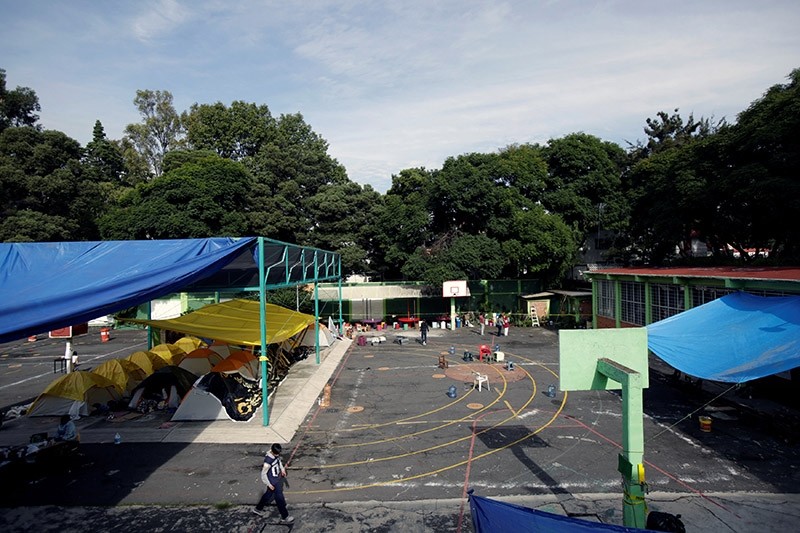
As many as 360 buildings and homes are in danger of collapse or with major damage in Mexico City nearly a week after a magnitude 7.1 earthquake completely collapsed 38 structures.
The risk of delayed collapse is real: The cupola of Our Lady of Angels Church, damaged and cracked by the Sept. 19 quake, split in half and crashed to the ground Sunday evening. There were no injuries.
Nervous neighbors continued calling in police on Monday as apparently new cracks appeared in their apartment blocks or existing ones worsened, even as the city struggled to get back to normality.
Officials said they had cleared only 103 of Mexico City's nearly 9,000 schools to reopen Monday and said it could be two to three weeks before all were declared safe — leaving hundreds of thousands of children idle.
Mexico City Mayor Miguel Angel Mancera said at least seven schools were among the buildings thought to be at risk of tumbling.
The quake rendered thousands of people homeless, with many of them living in tents in the streets or emergency shelters, but there were signs the 20 million people who live in Mexico City's greater metropolitan area were gradually resuming their routines.
"Our neighborhood is in mourning," said Deborah Levy, 44, from the trendy Condesa district that was among the worst hit by the quake. "Some neighbors and friends got together (Sunday). We went to eat to cheer ourselves up, looking for a little normality."
Some of the most affected neighborhoods, those built on top of a soft ancient lake bed, still had entire blocks cordoned off.
Of 6,000 damaged buildings, some 1,500 have yet to be inspected, said Horacio Urbano, president of Centro Urbano, a think tank specializing in urban issues and real estate.Ten percent of the damaged buildings were constructed after 1990, by which time strict building codes had been enacted in the wake of the 1985 earthquake that killed some 10,000 people.
Search for survivors
Search operations, using advanced audio equipment to detect signs of life beneath tons of rubble, continued at a few buildings with help from teams from as far afield as Israel and Japan.
At a school in southern Mexico City where 19 children and six adults had previously been reported killed, officials recovered another body on Sunday, that of an adult women.
The search for survivors continued in a ruined office building in the Roma neighborhood and in a five-story apartment building in historic Tlalpan.
Authorities called off efforts in the upper-middle class Lindavista zone after pulling 10 bodies from the rubble over several days, and work at the Tlalpan building was briefly halted on Saturday by a magnitude 6.2 aftershock.
Another 5.7 aftershock struck on Sunday off Mexico's west coast, jolting the southwestern part of the country, and seismologists predicted more tremors to come.
While aid and volunteer workers have flooded into the accessible districts of Mexico City, people in more remote neighborhoods and surrounding states have received less attention.
Miguel Angel Luna, a 40-year old architect, joined a caravan of civilians that headed out late last week to help isolated communities scattered around the base of the Popocatepetl volcano, located about 50 miles (80 km) southeast of the Mexican capital.
Around 40 percent of the adobe homes he saw in poor villages had been completely destroyed and some 80 percent were heavily damaged, Luna said.
"We're talking about very poor communities," Luna said. "They don't have tools, they don't have materials, they don't have money to rebuild."
